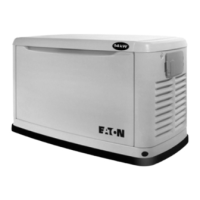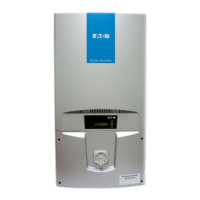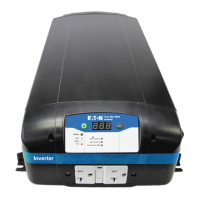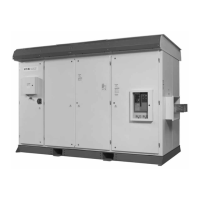3
• The National Electrical Code (NEC) requires the frame and external
electrically conductive parts of the generator to be connected to
an approved earth ground. Local electrical codes also may require
proper grounding of the generator electrical system.
• After installing this home standby electrical system, the genera-
tor may crank and start at any time without warning. When this
occurs, load circuits are transferred to the STANDBY (genera-
tor) power source. To prevent possible injury if such a start and
transfer occur, always set the generator’s AUTO/OFF/MANUAL
switch to its OFF position before working on equipment and
remove the 7.5A fuse from the generator control panel.
• In case of accident caused by electric shock, immediately shut
down the source of electrical power. If this is not possible,
attempt to free the victim from the live conductor. AVOID DIRECT
CONTACT WITH THE VICTIM. Use a nonconducting implement,
such as a dry rope or board, to free the victim from the live
conductor. If the victim is unconscious, apply first aid and get
immediate medical help.
• Never wear jewelry when working on this equipment. Jewelry
can conduct electricity resulting in electric shock, or may get
caught in moving components causing injury.
FIRE HAZARDS
• For fire safety, the generator must be installed and maintained
properly. Installation must always comply with applicable
codes, standards, laws and regulations. Adhere strictly
to local, state and national electrical and building codes.
Comply with regulations the Occupational Safety and Health
Administration (OSHA) has established. Also, ensure that the
generator is installed in accordance with the manufacturer’s
instructions and recommendations. Following proper installa-
tion, do nothing that might alter a safe installation and render
the unit in noncompliance with the aforementioned codes,
standards, laws and regulations.
• Keep a fire extinguisher near the generator at all times.
Extinguishers rated “ABC” by the National Fire Protection
Association are appropriate for use on the standby electric
system. Keep the extinguisher properly charged and be familiar
with its use. Consult the local fire department with any ques-
tions pertaining to fire extinguishers.
EXPLOSION HAZARDS
• Do not smoke around the generator. Wipe up any fuel or oil
spills immediately. Ensure that no combustible materials are left
in the generator compartment, or on or near the generator, as
FIRE or EXPLOSION may result. Keep the area surrounding the
generator clean and free from debris.
• Gaseous fluids such as natural gas and liquid propane (LP)
gas are extremely EXPLOSIVE. Install the fuel supply system
according to applicable fuel-gas codes. Before placing the
home standby electric system into service, fuel system lines
must be properly purged and leak tested according to applica-
ble code. After installation, inspect the fuel system periodically
for leaks. No leakage is permitted.
STANDARDS INDEX
Applicable national, state, or local laws, codes, and regulations
pertaining to the installation of engine-generator power systems
must be strictly complied with. Always use the current accept-
able version or edition of the applicable code or standard. In the
absence of pertinent local laws and standards, the following pub-
lished booklets may be used as a guide:
1. National Fire Protection Association (NFPA) 70: The NATIONAL
ELECTRIC CODE (NEC) *
2. NFPA 10: Standard for Portable Fire Extinguishers *
3. NFPA 30: Flammable And Combustible Liquids Code *
4. NFPA 37: Standard for Stationary Combustion Engines And
Gas Turbines *
5. NFPA 54: National Fuel Gas Code *
6. NFPA 58: Standard for Storage And Handling Of Liquefied
Petroleum Gases *
7. NFPA 70E: Standard For Electrical Safety In The Workplace *
8. NFPA 5000: Building Code *
9. ASAE EP-364.2 Installation and Maintenance of Farm Standby
Electric Power ****
10. Agricultural Wiring Handbook ***
11. International Building Code **
This list is not all inclusive. Check with the Authority Having Local
Jurisdiction (AHJ) for any local codes or standards which may be
applicable. The above listed standards are available from the fol-
lowing internet sources:
* www.nfpa.org
** www.iccsafe.org
*** www.rerc.org - Rural Electricity Resource Council, P.O. Box
309 Wilmington, OH 45177-0309
**** www.asabe.org - American Society of Agricultural &
Biological Engineers, 2950 Niles Road, St. Joseph, MI
49085.
CALIFORNIA PROPOSITION 65 WARNING
Engine exhaust and some of its constituents are known
to the State of California to cause cancer, birth defects
and other reproductive harm.
CALIFORNIA PROPOSITION 65 WARNING
This product contains or emits chemicals known to the
State of California to cause cancer, birth defects and
other reproductive harm.
Safety Rules

